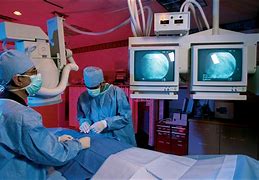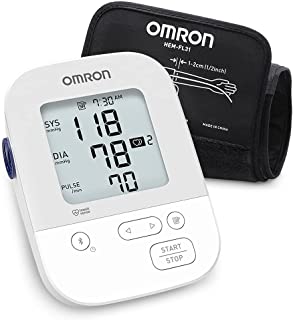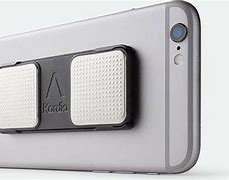
Test Your Heart for A-Fib at Home, EKG
How to Detect Atrial-Fibrillation
Home Detection and Prevention of Stroke
Detection of atrial fibrillation using a modified micro life blood pressure monitor. This device is able to detect A-Fib (Atrial Fibrillation is a Stroke Risk) with high sensitivity and specificity. Test Your Heart for A-Fib at Home, EKG. You can also use a device by patients who monitor their blood pressure at home, it may help detect asymptomatic A-Fib and allow for treatment prior to the development of a stroke.
Background: Hypertension is a major risk factor for the development of atrial fibrillation (A-Fib) and for stroke due to A-Fib. Asymptomatic A-Fib can result in a stroke, in patients with risk factors, if it is not detected and treated appropriately. This study evaluated the sensitivity and specificity of an automatic oscillometer sphygmomanometer designed for Atrial Fibrillation Home Detection.
Methods: The sphygmomanometer incorporates an algorithm for detecting A-Fib while reducing false positive readings due to premature beats. A total of 405 unselected outpatients seen in two cardiology offices were evaluated by taking three sequential device readings and one electrocardiogram (EKG) on each patient.
Results: For detecting A-Fib, the sensitivity was 95% and the specificity 86% with a positive predictive value of 68% and a negative predictive value of 98% for single device readings. For the three sequential device readings grouped together, the sensitivity was 97% and the specificity was 89%. The device correctly categorized most of the non-A-Fib, abnormal rhythms. The specificity for those in sinus rhythm was 97%.
Conclusions: This device is able to detect A-Fib with high sensitivity and specificity. Use of this device by patients who monitor their blood pressure at home may help detect asymptomatic A-Fib and allow for treatment prior to the development of a stroke.
A-fib patients detect irregular heart rhythms with the latest Technology in home EKGs and Blood Pressure Monitors
(As an Associate of Amazon, I earn from qualifying purchases)
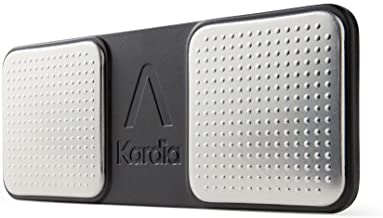
KardiaMobile Personal EKG Device is a heart monitor with a single lead with 3 detections for Atrial Fibrillation. It’s FDA cleared and it’s by AliveCor.
This is a simple and convenient test to take at home if you’re unsure if you have A-Fib. You get your results within 30 seconds.
These electronic devices for self-home BP monitoring, which implements an algorithm for A-Fib diagnosis has an excellent diagnostic accuracy and might, therefore, be used as a reliable screening test for the early diagnosis of A-Fib.
Omron Silver Blood Pressure Monitor has an upper arm cuff. Digital Bluetooth and stores up to 80 readings.
How to detect Atrial Fibrillation at home is as easy as pulling up your sleeve and is incredibly accurate, If you remotely suspect that you have an irregular heartbeat, test your BP immediately, or see a physician.
A Few Celebrities That Have A-Fib, Anyone Can Get It



Howie Mandel has a heart condition known as A-Fib
It was nearly five years ago when well-known comedian, game show host and actor Howie Mandel learned that he suffered from the heart condition known as atrial fibrillation. It is an irregular beat of the heart and it is associated with an increased stroke risk. He is now going around, speaking with groups and attempting to raise knowledge about atrial fibrillation, or afib as it is more commonly known.
He was asked why he wanted to talk about his personal battle with a-fib. He said that he decided to become an advocate for a-fib sufferers because he is one of over 5.8 million Americans who have a-fib which is not caused by having any sort of heart valve problem. He stated he had no clue he even had it. He only discovered he did when he went for a regular doctor’s check-up. The physician listened to his heartbeat and discovered the irregular rhythm. He did not have any symptoms and did not have any clue this might make him five times more likely to have a stroke than someone who did not have a-fib.
By Kimberly Ruble 2013
Larry Bird suffers from A-Fib
“I always knew there was something funny about my heart,” Bird writes, occasionally during off-season workouts when he was a player, he would feel sudden exhaustion and his heart would start “jumping around.” Bird wasn’t sure what it was, but he
would take a long nap and the feeling would pass. What he calls his “episodes”–his resting heart rate would double, to 104beats per minute, resulting in light-headedness, disorientation and profuse sweating–apparently didn’t occur during the regular
season, and he never told Celtics doctors about them. That sounds incredible, particularly given the M*A*S*H atmosphere in which the Celts were playing in those days, but that was Bird, always intensely private.”
By Jack Mccallum 1999
President Joe Biden also has Atrial Fibrillation
Biden has atrial fibrillation (A-fib), the most common form of heart arrhythmia, but “remains completely asymptomatic.
Biden’s physician, O’Connor named five medications Biden is presently on, including the anticoagulant Eliquis, the statin Crestor, acid reflux drug Pepcid, as well as Allegra and Dimisa for seasonal allergies.
By Jonathan Ernst
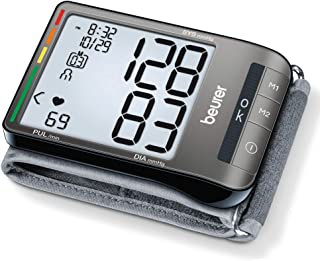
Beurer Top pick features a wrist BP Monitor-$45.14
How important is it to track your Blood Pressure when you have Atrial-Fib?
High blood Pressure, also called hypertension, is sometimes called the silent killer because there are no symptoms.
High blood pressure often has no symptoms. It can take as long at 10 or 15 years for complications to arise, meaning if someone has high blood pressure in their 30s, they risk severe health conditions in their 40s and 50s. Without monitoring their blood pressure, they won’t be aware of the danger until it is too late.
Atrial Fibrillation Home Detection Devices made simple To Use
How Important is it to get diagnosed for A-Fib?
Urgent medical attention is usually recommended in severe cases by health care providers. Atrial fibrillation diagnosis is important because with proper diagnosis and treatment people with A-Fib can live full, active lives. An important part of A-fib diagnosis is also the identification and treatment of any underlying treatable conditions which contribute to atrial fibrillation.
Doctors are advising any one with A-Fib to use the EKG and Blood Pressure monitors. The information is vital to getting diagnosed and treated.
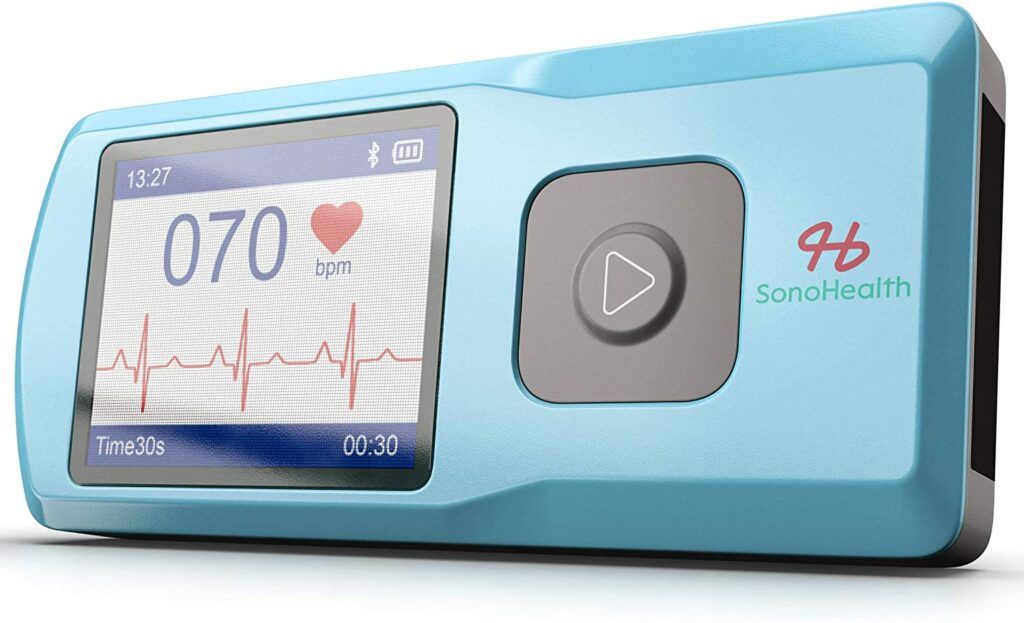
Why is EKG Important for diagnosing A-Fib?
An EKG is the main test for diagnosing Atrial Fibrillation and blood tests. These help a doctor rule out thyroid problems or detect other substances in the blood that may lead to A-Fib. The (EKG, ECG) or electrocardiogram is a quick and painless test that measures the electrical activity of the heart. An ECG can show if the heart is beating too fast, too slow or not at all. An ECG is the main test for diagnosing Atrial Fibrillation. The Atrial Fibrillation Home Detection EKG is a smart investment in your peace of mind.
How to Detect Atrial Fibrillation at home
If you’ve had any of the symptoms (these are just a few) listed to the right, seek medical attention immediately.
It’s always a good idea to have a backup, with and EKG heart monitor and Blood Pressure home monitor, you’re ahead of the game. It’s settling to your peace of mind knowing your numbers are safe or not, whether you think you may have A-Fib, or you’ve been diagnosed. A health care professional use to be the only ones who were able to prescribe them to you. That meant another doctor visit.
Heart palpitations, skips, and flips are very common symptoms that most of us will experience from time to time. In many cases, they are just your heart’s normal reaction to stress, fatigue, or even changes in hormones. But sometimes these symptoms are a warning of something more serious. If you are having heart symptoms, your provider may recommend an electrocardiogram (ECG also called EKG).
Or you might need to wear a heart monitor to make sure there isn’t a serious heart rhythm issue. But what if you can’t make it to the doctor’s office? New technology has made it possible to monitor your heart rhythm from your smart device. Personal ECG devices became especially useful during the Covid-19 pandemic, when it was more difficult to visit their doctors’ offices.
Here we’ll discuss why people use at-home monitors and how reliable they are.
ECG can only tell you what’s going on at that specific moment. Because it just gives a snapshot of what your heart is doing, you might need an at-home monitor to get a better look.
The downside of medical grade monitors includes:
A healthcare professional must prescribe them, which means you will need a visit to the doctor.
Some people are allergic or sensitive to the adhesive that keeps the monitor in place.
If you don’t have any of your symptoms while wearing the monitor, then you may not get an answer.
What are the most common personal ECG monitors?
Two common smart, home ECG monitors are the Apple Watch and the AliveCor Kardia devices. Fitbit, Wellue, Omron, and Emay also offer products for use at home.
The Apple Watch is especially helpful because you can wear it on the wrist. That makes it easy to check your heart rhythm whenever a symptom occurs. The other devices require a few extra steps to get the device up and running. So, there’s a chance the symptoms may be gone by the time you hit the “record” button.
What are the most accurate home ECG monitors?
Medical-grade Holter monitors, and similar devices are highly accurate. They are placed directly on the chest, which eliminates a lot of the “noise” that you can get with personal at-home ECG monitors.
Personal at-home ECG monitors use wrist or finger sensors to detect heart rhythms, so they may be less accurate. Medical-grade monitors record a continuous ECG, while many personal ECG devices require that you hit the record button to save a tracing. For these reasons, if your problem is potentially life-threatening, a medical-grade recording device is your best option.
There are no good studies that directly compare the newest versions of personal, at-home ECG monitors to each other or to medical-grade devices. There are no good studies that directly compare the newest versions of personal, at-home ECG monitors to each other or to medical-grade devices. Researchers from Northwestern University found the Apple Watch to be very reliable. The AliveCore system has also done well when tested in people at risk for serious heart rhythm problems. Less is known about the other products listed above.
How do you use a home ECG monitor?
Using a personal at-home ECG device is usually fairly simple. But it’s important to read up on it or watch an instructional video before you start to monitor your heart. That way, you’ll be ready to use it if you experience palpitations.
You wear the Apple Watch on your wrist, where sensors will track your heart rate and rhythm. Be sure you have the app installed on your smartphone so you can download your rhythm recording.
The AliveCor monitor uses a small finger pad that you can carry with you or stick to the back of your smartphone. You’ll need to use the app with this gadget as well. When you feel palpitations, you place your fingers on the pad while the product takes an ECG.
The other devices use sensors that you press to your fingers, palms, chest, or legs to record your heart rhythm.
What should you do if a home ECG monitor detects an irregular heart rhythm?
If your home ECG monitor detects an unusual rhythm, don’t panic. It’s important to discuss your irregular rhythm with your healthcare provider, so they can discuss with you what to make of your reading.
Your provider can also help you with next steps. They may want to see you for an in-person evaluation, or they may give you instructions on how to share your results. Most of the home ECG devices will allow you to create a Pdf file of your recording, which you can download and/or print. But it’s important to check with your provider before sending any information, to be sure they can receive it. There should be safeguards in place to keep your information private.
If your at-home monitor detects an irregular rhythm, be sure to contact your healthcare provider.
References- Journal of Arrhythmia
I hope some questions were answered for you and if not, feel free to leave them in the comment or contact us section.
If you’d like some different Topics about A-Fib, please go to
Yoga benefits for Atrial Fibrillation
Wishing you all the best, Sherry
Some Symptoms of Atrial Fibrillation
Dizziness and light headedness
These are common symptoms of A-Fib. You may feel dizzy or lightheaded because your organs are not getting enough oxygen or because of the increase in your heart rate and blood pressure.
The most specific symptom of A-Fib is the change in the pattern of your heartbeats. Many people with this condition experience moments when their heart rate suddenly increases, and they become aware of each beat.
It often feels like the heart is flip-flopping or pounding against the chest cavity. It may feel like your heart has skipped a beat or added an extra beat. (Heart palpitations)
A rapid heart rate that is typically more than a hundred beats per minute is known as tachycardia. For people with atrial fibrillation, episodes often feature heart rates as high as this.
Fatigue.
Your heart works faster than it should when you have atrial fibrillation. Unfortunately, an increase in heart rate, and the efficiency of your heart drops. When your heart overworks itself, you use more energy. This can reduce the energy available for you to perform other tasks and leave you fatigued.
The drop in efficiency also means your heart is not able to fully utilize the oxygen you breathe in. Your muscles depend on oxygen for energy and its absence may also contribute to fatigue. Fatigue is a more intense and chronic type of tiredness.
Occasional, persistent, permanent
A-Fib symptoms may be occasional, persistent, or permanent. Persistent and permanent A-Fib are more reliant on medication. A-Fib can become more chronic if you leave it untreated. You can be prescribed medication to lower your risk of complications. Some doctors are prescribing Yoga for their patients. If you experience symptoms of A-Fib, you should see a doctor
Pages: 1 2
